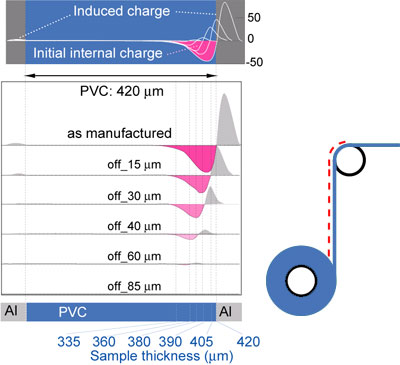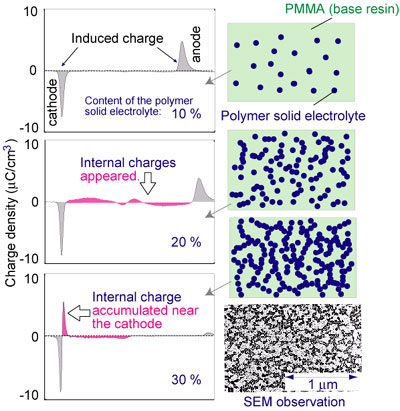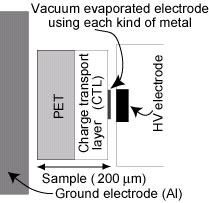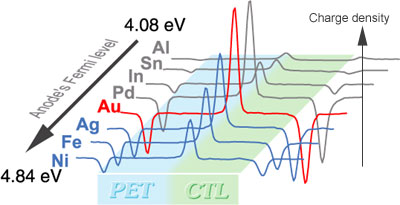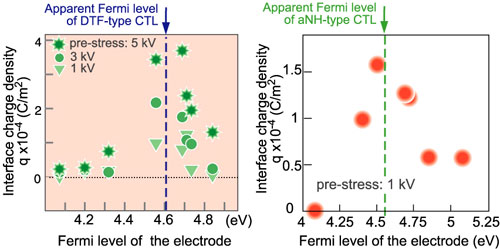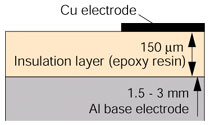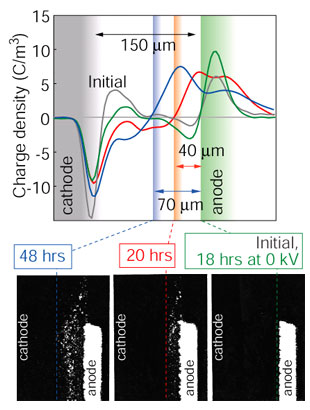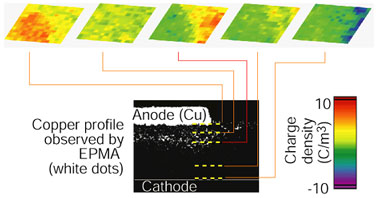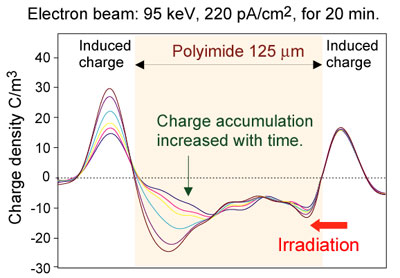This figure is a space charge distribution
in a polymer film including initial charge which could be formed during
the manufacturing process.
The charge remains when I filed the surface with a sand paper! The top waveform shows the original, and (b), (c),...shows the internal charge of the filed sample. Each thickness is shown at the bottom of the figure. The charge can disappear when it's heated up to Tg.
The charge remains when I filed the surface with a sand paper! The top waveform shows the original, and (b), (c),...shows the internal charge of the filed sample. Each thickness is shown at the bottom of the figure. The charge can disappear when it's heated up to Tg.
